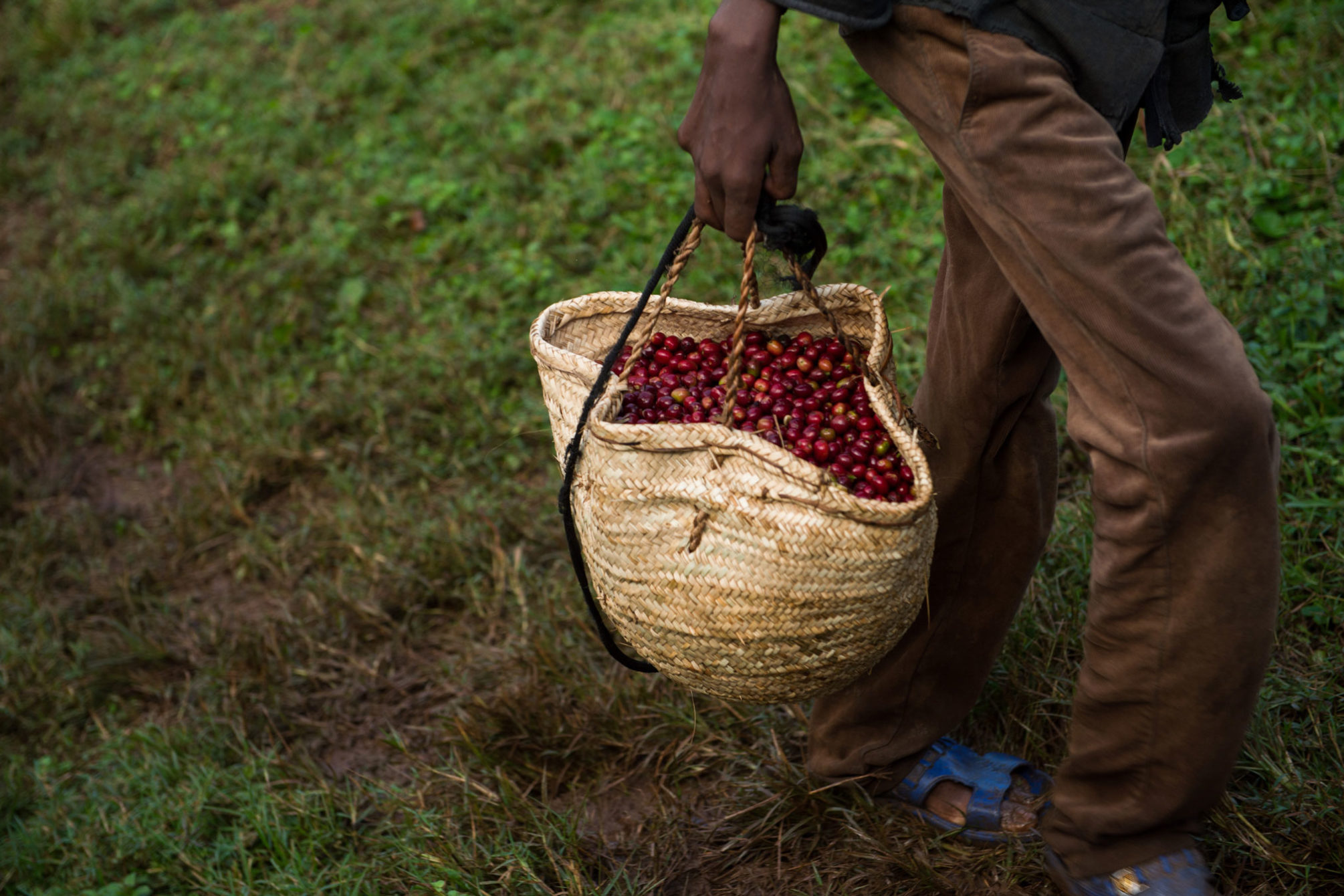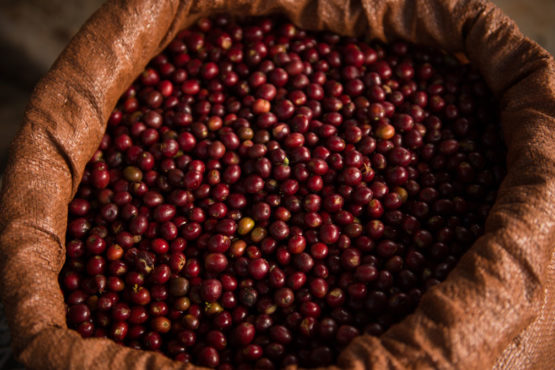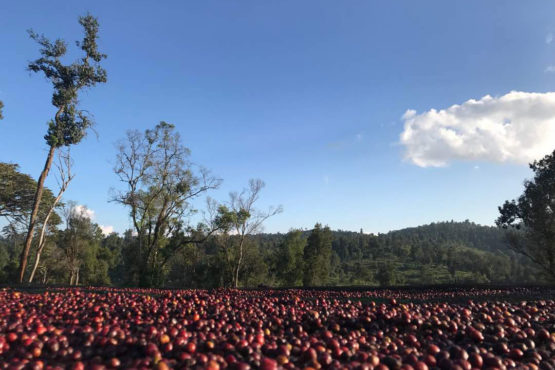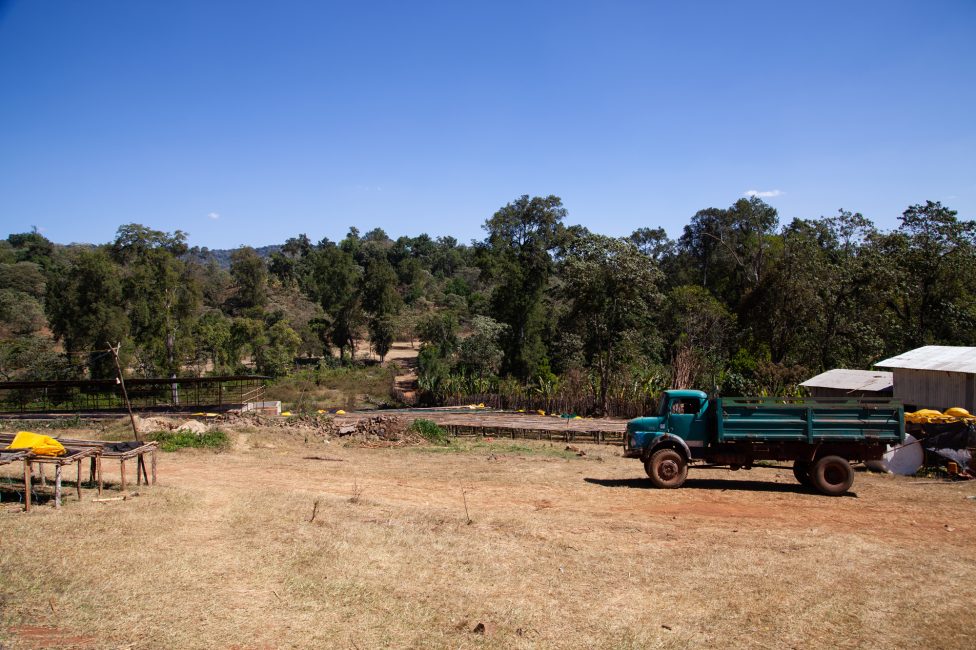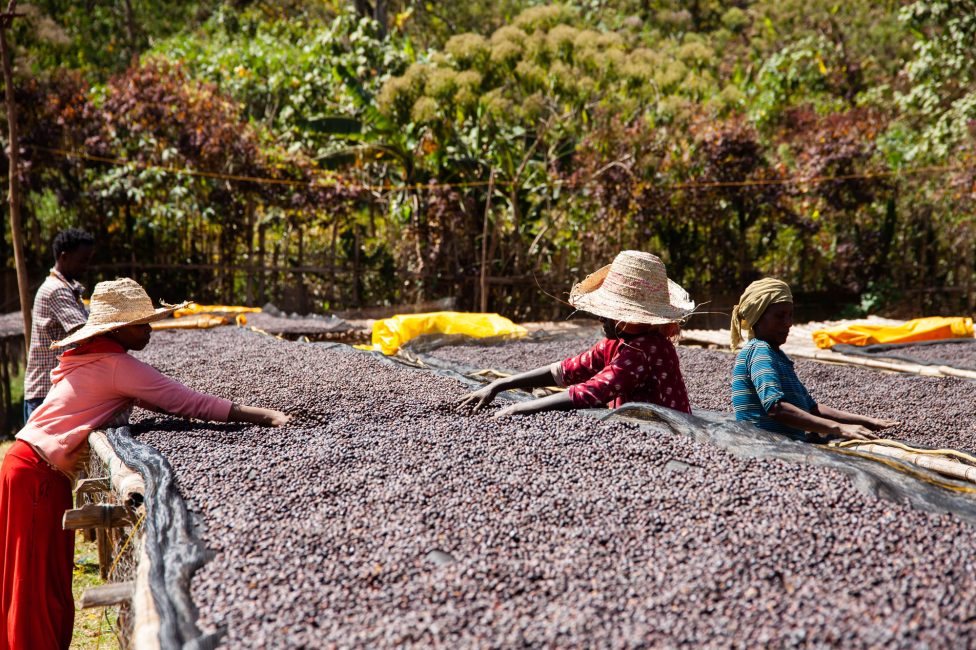Chiri Natural
Creamy white chocolate with blueberry, wine gums and purple grape. Intensely sweet, with a heavy body.
Chiri originates from the Sidama coffee growing region in the eastern part of the Sidamo zone, in Ethiopia’s Southern Oromia State, in the ‘kebele’ (local village) of Hora Ela. It is named after the ‘woreda’ (administrative division) that is located in: Chiri.
The washing station sits at 1,900m above sea level, and is privately owned by Kenan Asefa, who buys cherries from 650 local families; each family cultivates a small plot of land (averaging 2.5 hectares in size), located 1,800–2,200 metres above sea level.
VARIETY
This coffee is a mix of varieties that we refer to as “heirloom varieties”. This term is all encompassing and very broadly used by many actors in the coffee industry to categorise Ethiopian coffee varieties that are from native forest origins. Whilst this describes many of the varieties found in Ethiopia, it is also a bit simplistic, and does not recognise varieties that have been specifically developed and widely distributed by the Jimma Agricultural Research Centre (JARC).
In the Sidamo growing region, there are four “Specialty Group varieties” that have been released by JARC. These are called Angafa, Faye, Koti and Odicha. There are also native or “landrace” varieties in the region that were originally selected from the forest and have been propagated in the Sidamo region for decades. Three are well-known to local producers, who typically grow at least two of them; they are called called Dega, Karma and Wolisho. There is little documentation on the history of these varieties, and it is hard to know if they represent single varieties or a wider group of varieties, however it is widely accepted that they play a major role in the quality of the coffee from this region, with a distinctive floral and citric cup profile.
PROCESSING
This coffee is natural processed. It is classified as Grade 1, indicating that a lot of effort has been put into the selection and grading during processing.
Processing naturals well requires a high level of attention to detail. Ethiopian coffee has been processed this way by generations of farmers who have mastered the art of the natural method through centuries of tradition and experience.
Each day, carefully hand-picked coffee cherries are delivered to the wet mill and are meticulously hand-sorted prior to processing to remove unripe, overripe, or damaged fruit, in order to enhance the quality and sweetness of the cup.
The coffee is then graded by weight and spread evenly on raised African beds (screens) to sun-dry. Initially, it is laid very thinly and turned regularly to ensure consistent drying and prevent over-fermentation. This is done very carefully to avoid damage to the fruit.
After a few days, when the coffee has reached 25% humidity—this is called the “raisin stage”—the layers of coffee are gradually increased. Careful attention and control during this drying phase ensures the coffee is stable and that a clean and balanced cup profile is achieved. The coffee is turned constantly whilst drying to ensure that it dries evenly and consistently. At midday, the coffee is covered to protect it from full sun. It is also covered overnight to prevent damage from morning dew.
Once the coffee reaches the optimum moisture level (usually after 15–18 days), it is hulled and rested in bags in parchment until it is ready for export.
